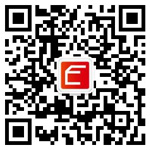
Overview
Product name
Human EGFR knockout HeLa cell lineParental Cell Line
HeLaOrganism
HumanMutation description
Knockout achieved by using CRISPR/Cas9, 1 bp deletion in exon 1 and 1 bp insertion in exon 1Passage number
<>Knockout validation
Sanger Sequencing, Western Blot (WB)Tested applications
Suitable for:WBmore detailsBiosafety level
2General notes
Recommended control: Human Wild Type HeLa cell line (ab255928)
Please note a wild type cell line is not automatically included with a KO cell line order, if required please add recommended wild type cell line at no additional cost using the code WILDTYPE-TMTK1
Cryopreservation cell medium: Cell Freezing Medium-DMSO Serum free media, supplemented with 10% (v/v) DMSO
Handling procedure: Upon arrival, the vial should be stored in liquid nitrogen vapor phase and not at -80°C. Storage at -80°C will result in loss of viability.1. Thaw the vial in 37°C water bath approximately 1-2 minutes.2. Transfer the cell suspension to a 15 mL conical tube with pre-warmed 5 mL complete mediumDMEM+10% FBS, spin 125×g for approximately 5 minutes at room temperature.3. Resuspend the cell pellet with 1 mL pre-warmed complete mediumDMEM+10% FBS and dispense into a 25cm2 culture flask containing 10 mL pre-warmed complete complete mediumDMEM+10% FBS.4. Incubate the culture at 37°C incubator with 5% CO2.5. A subcultivation ratio of 1:4-1:6 is recommended. Cells should be passaged when cells grow splitting at 80-90% confluence.
Click here to view the Mammalian cell tissue culture protocol
This product is subject to limited use licenses from The Broad Institute, ERS Genomics Limited and Sigma-Aldrich Co. LLC, and is developed with patented technology. For full details of the licenses and patents please refer to our limited use license and patent pages.
Properties
Number of cells
1 x 106 cells/vial, 1 mLViability
~90%Adherent /Suspension
AdherentTissue
CervixCell type
epithelialDisease
AdenocarcinomaGender
FemaleSTR Analysis
Amelogenin XD5S818: 11, 12D13S317: 12, 13.3D7S820: 8, 12D16S539: 9, 10vWA: 16, 18TH01: 7TPOX: 8,12CSF1PO: 9, 10Antibiotic resistance
Puromycin 1.00µg/mlMycoplasma free
YesStorage instructions
Shipped on Dry Ice. Store in liquid nitrogen.Storage buffer
Constituents: 8.7% DMSO, 2% Cellulose, methyl etherResearch areas
- Signal Transduction
- Protein Phosphorylation
- Tyrosine Kinases
- Receptor Tyrosine Kinases
- Signal Transduction
- Growth Factors/Hormones
- EGF
- Cancer
- Signal transduction
- Protein phosphorylation
- Tyrosine kinases
- Receptor tyrosine kinases
- Cancer
- Oncoproteins/suppressors
- Oncoproteins
- Growth factor receptors
- Cancer
- Tumor biomarkers
- Receptors
Target
Function
Receptor tyrosine kinase binding ligands of the EGF family and activating several signaling cascades to convert extracellular cues into appropriate cellular responses. Known ligands include EGF, TGFA/TGF-alpha, amphiregulin, epigen/EPGN, BTC/betacellulin, epiregulin/EREG and HBEGF/heparin-binding EGF. Ligand binding triggers receptor homo- and/or heterodimerization and autophosphorylation on key cytoplasmic residues. The phosphorylated receptor recruits adapter proteins like GRB2 which in turn activates complex downstream signaling cascades. Activates at least 4 major downstream signaling cascades including the RAS-RAF-MEK-ERK, PI3 kinase-AKT, PLCgamma-PKC and STATs modules. May also activate the NF-kappa-B signaling cascade. Also directly phosphorylates other proteins like RGS16, activating its GTPase activity and probably coupling the EGF receptor signaling to the G protein-coupled receptor signaling. Also phosphorylates MUC1 and increases its interaction with SRC and CTNNB1/beta-catenin.Isoform 2 may act as an antagonist of EGF action.Tissue specificity
Ubiquitously expressed. Isoform 2 is also expressed in ovarian cancers.Involvement in disease
Lung cancerInflammatory skin and bowel disease, neonatal, 2Sequence similarities
Belongs to the protein kinase superfamily. Tyr protein kinase family. EGF receptor subfamily.Contains 1 protein kinase domain.Post-translationalmodifications
Phosphorylation at Ser-695 is partial and occurs only if Thr-693 is phosphorylated. Phosphorylation at Thr-678 and Thr-693 by PRKD1 inhibits EGF-induced MAPK8/JNK1 activation. Dephosphorylation by PTPRJ prevents endocytosis and stabilizes the receptor at the plasma membrane. Autophosphorylation at Tyr-1197 is stimulated by methylation at Arg-1199 and enhances interaction with PTPN6. Autophosphorylation at Tyr-1092 and/or Tyr-1110 recruits STAT3. Dephosphorylated by PTPN1 and PTPN2.Monoubiquitinated and polyubiquitinated upon EGF stimulation; which does not affect tyrosine kinase activity or signaling capacity but may play a role in lysosomal targeting. Polyubiquitin linkage is mainly through "Lys-63", but linkage through "Lys-48", "Lys-11" and "Lys-29" also occurs. Deubiquitination by OTUD7B prevents degradation. Ubiquitinated by RNF115 and RNF126.Methylated. Methylation at Arg-1199 by PRMT5 stimulates phosphorylation at Tyr-1197.Cellular localization
Secreted and Cell membrane. Endoplasmic reticulum membrane. Golgi apparatus membrane. Nucleus membrane. Endosome. Endosome membrane. Nucleus. In response to EGF, translocated from the cell membrane to the nucleus via Golgi and ER. Endocytosed upon activation by ligand. Colocalized with GPER1 in the nucleus of estrogen agonist-induced cancer-associated fibroblasts (CAF).- Information by UniProt



